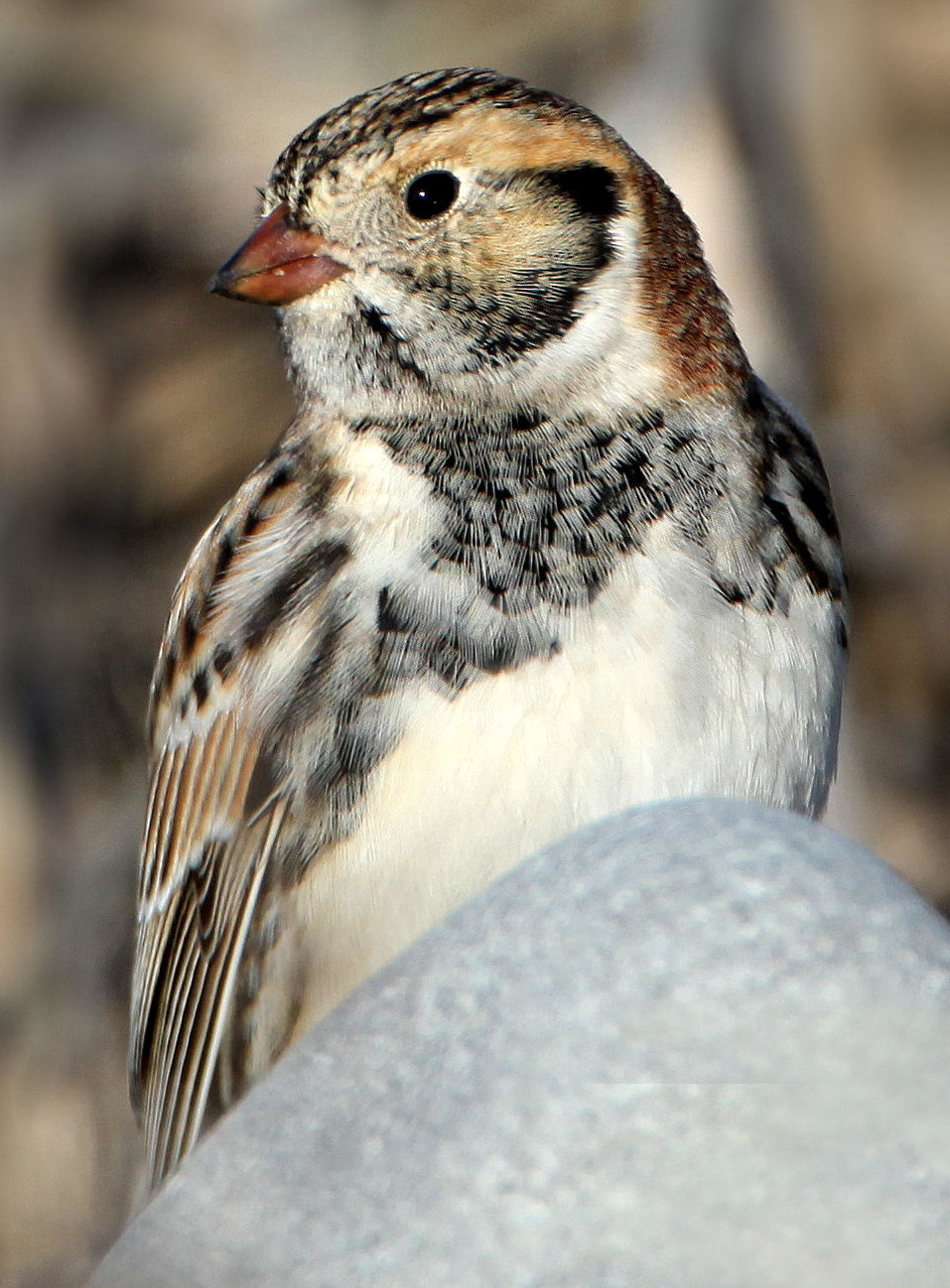The Lapland Longspur, a winter bird here in Wisconsin, perhaps best represents the arctic chill currently swallowing the Midwest. The longspur breeds on the highest of the high arctic, residing on the tundra grasslands that typically reserve this -30 degree Fahrenheit air. On its breeding territory, the longspurs display a brilliant black bib, face, and crown, a rusty nape, and a vibrant yellow beak.
Lapland longspur in its summer breeding grounds. Photo by Fiona Paton FFF
This species eats seed during its winter foray into Wisconsin, a diet which its bill is well-adapted for. Here at Faville Grove Sanctuary, I wonder if these birds are finding sufficient food for the winter, but the staggering diversity and weight of seed in a prairie restoration should easily last the winter. I’ve seen longspurs along the edges of fields down Prairie Lane this winter.
Because of its high arctic breeding grounds, very little is known about the Lapland longspur in terms of population or ecology. The overall population seems to be healthy, as this is a common winter bird of the northern United States.
Lapland longspur photo by Nigel, FCC
One study on longspurs found that the birds show a slight spike in testosterone during the breeding cycle when they use song displays and participate in courtship. This spike lasts for two days. Over the next week or so, the males will vigorously defend the female they are paired with. Outside of this week-long window, male longspurs are quite affable and tolerant of other males entering their territory. Other species, in studies involving testosterone, have shown longer-lasting spikes of testosterone and exhibit agressive behavior for a much longer time period, even over a month long. The chill of the Lapland longspurs goes beyond their general habitat and infiltrates their very demeanor.
You might find Lapland longspurs down Prairie Lane, once the snow has melted a bit.
Written by Drew Harry, Faville Grove Sanctuary land steward






